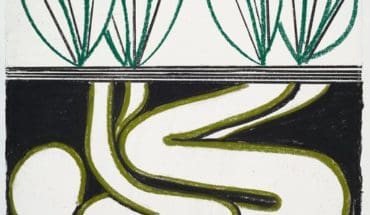3 Different (and Effective) Ways Art Can Be Used in Therapy and for Mental Health Support: Art is an important form of creative expression, and yet its power extends into some quite unexpected areas, and it can even have therapeutic applications for those facing mental health issues.
Here are some examples of how it can be used to benefit people facing a variety of conditions, and coping with a litany of traumas, to show you just what art can do in a healthcare and self-care context.
Choosing Artworks That Help Create a Positive and Relaxed Environment
Creating a positive and relaxed atmosphere is essential for any therapy environment. Art can be used as an effective tool to help achieve this.
Whether it’s picking artworks that reflect the patient’s values and moods, or even colors that evoke feelings of calmness, art helps define a space where individuals feel comfortable sharing their inner thoughts and emotions.
It also helps bring focus to the therapeutic process by providing visual cues while they are talking about topics related to their mental health support needs, such as trauma-related experiences or areas in which they need more self-awareness work.
By selecting artwork with meaningful symbolism, it’s possible to provide patients with additional emotional outlets during sessions, allowing them to express themselves without words if needed.
In addition, artworks that feature natural elements like plants and animals have been known to encourage relaxation, making it easier for people who might otherwise struggle in traditional therapy situations.
The power of art cannot be underestimated when it comes to creating a safe, therapeutic environment for individuals who are seeking mental health support, making the choice of artwork an important one. And with online galleries like Singulart providing an array of contemporary pieces and classically inspired works alike, it’s easy for therapists and patients to pick works that speak to them and serve their needs.
Uncovering New Perspectives Through Creative Writing Exercises
The written word can be a work of art in its own right, and it has its use in therapy scenarios, especially when seen through the lens of creativity.
Most significantly, creative writing can be used effectively in therapy to dig into issues and unearth fresh angles on them, without taking a head-on approach.
Writing exercises provide a safe platform where individuals can freely express their thoughts without fear of judgment or criticism. It allows them the opportunity to explore difficult topics, such as traumas or unresolved issues, that they may not feel comfortable discussing out loud with others.
It also helps people become more aware of their own emotions by encouraging them to write down how they are feeling at any given moment.
Writing activities even challenge individuals’ imaginations, enabling them to come up with innovative solutions that might have been obscured from them.
Using Music, Movement and Dance to Access Inner Resources
In many cases, the artistic forms of music, movement and dance allow us to become more aware of our bodies, so we can tap into how we feel on a physical level, without the mental fog that can often get in the way.
Music therapy also encourages creativity while promoting relaxation, providing a means of expression that’s non-verbal, and yet immensely meaningful nonetheless.
Additionally, dancing and singing have therapeutic benefits that go beyond the mental realm, helping individuals release stress hormones which often arise during difficult times. So as an all-round solution to common complications of the mind and body, there’s really nothing else like it.
The Bottom Line
Art and therapy are increasingly intertwined, and hopefully you can now see why there’s a benefit to being creative if mental health struggles are looming large.
- New lipid-based pathway discovered as key to memory formation - 25th June 2025
- Crucial link could explain how Alzheimer’s takes hold - 25th June 2025
- Understanding Your Mind Can Improve Daily Life - 25th June 2025







